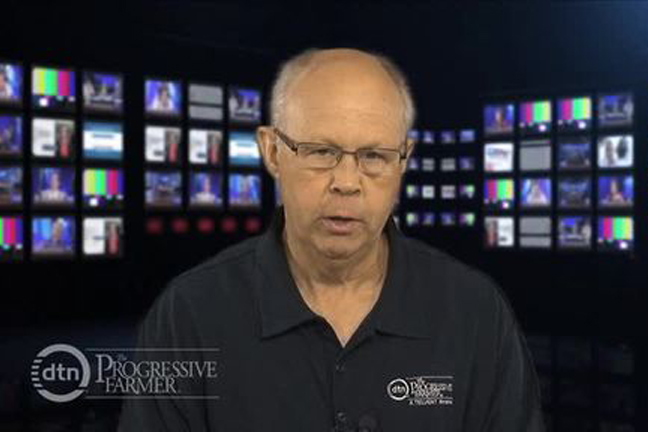
Agricultural News
Cold Front Start of a Long Fall Harvest, Anderson Says
Wed, 10 Sep 2014 15:03:21 CDT

A cold front across the northern cornbelt looks to be the start of wet trend across the midwest, making harvest more challenging for farmers. DTN Senior Ag Meteorologist Bryce Anderson said this week's freezing weather and rainfall will be a ongoing trend.
"The Pacific Ocean indictors there is more of a trend toward at least a weak El Nino for later this fall to develop," Anderson said. "When that is effect it relates to a higher than average rainfall total for much of the plains and midwest going into the fall season."
In a interview with Leslie Smith of the Radio Oklahoma Ag Network, Anderson said this is another indication much of the US is getting set for fall that is normal to above normal precipitation and temperatures running normal to below normal levels. This combination looks to bringing a challenge to harvest while impacting crop quality.
"The way things are shaping up this looks to be a fall comparable to the 2009 harvest," Anderson said. "During that fall, harvest really dragged out and there were numerous issues with crop quality, with very light grain. I don't think we're going to have quite that extreme of a scenario for this fall, but it is going be one where we will see some issues with grain weight not being quite the weight we would like to see there's going to be some moisture issues as well."
Anderson does not foresee this situation to be widespread, but it will definitely impact harvest progress. Getting this wetter and cooler than normal cycle will extend harvest and he anticipates harvest to be more expensive as it will be more difficult for crops to come out of the field in favorable moisture state before going into storage. Farmers across the midwest will also have added costs of drying the crop down.
This cooler and wetter trend will extend beyond the cornbelt. Anderson said there is high chance for this cycle with above average precipitation to extend into the Southern Plains region this fall.
"It's going to cause a maybe a bit of slow down in terms of wheat planting but on the other hand its going to recharge a soil moisture profile that has been pretty well drawn drown by drought over the last couple years," Anderson said. "It's helping pastures and it helping hay crops so that's all been a big benefit when you think about how the weather pattern is presenting itself."
WebReadyTM Powered by WireReady® NSI
Top Agricultural News
More Headlines...



















